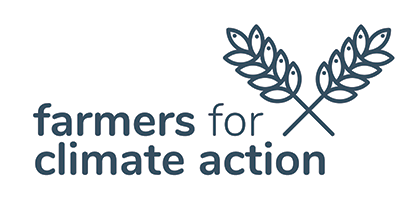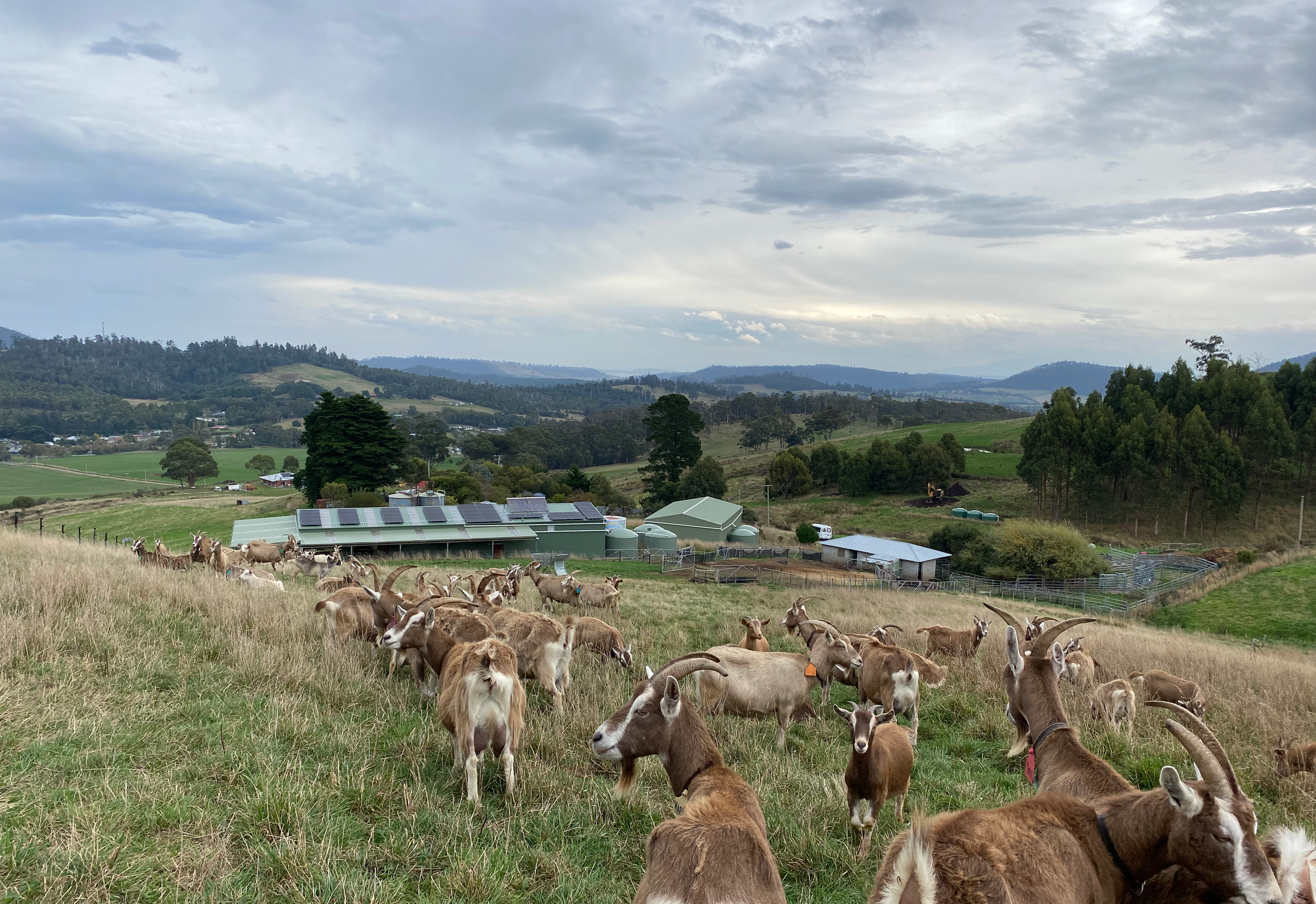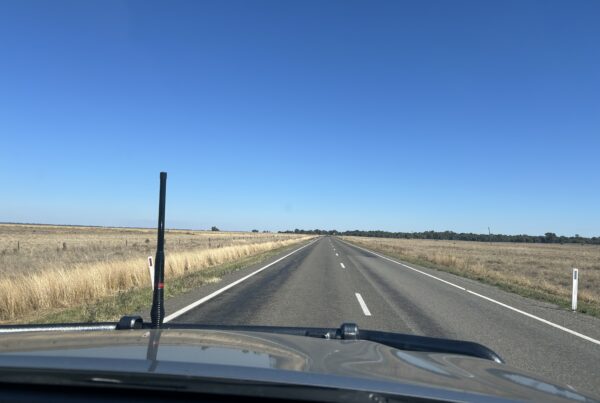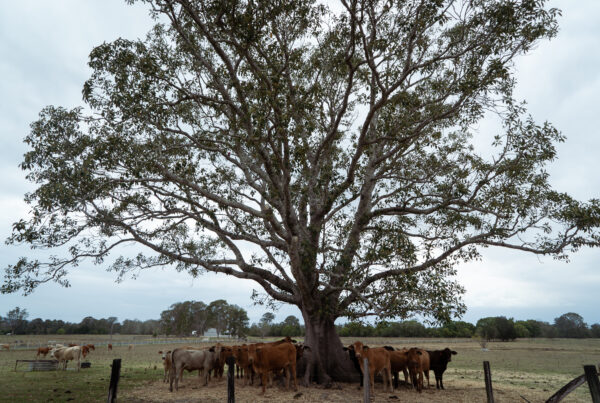22 December 2023
Farmers for Climate Action Submission: Agriculture and Land Sectoral Plan
Farmers for Climate Action thanks the Department of Agriculture, Fisheries and Forestry (DAFF) for the opportunity to contribute to the development of the Agriculture and Land Sectoral Plan via the ‘Agriculture, Land and Emissions Discussion Paper’.
Farmers for Climate Action represents more than 8,000 farmers across Australia and 45,000 supporters committed to deep emissions reductions across the economy this decade. Farmers for Climate Action strongly supports the development of a cohesive national plan to ensure all farmers can benefit from the shift to a low emissions economy. Decarbonisation of all sectors is essential for agriculture’s future, and our ability to produce food and fibre with a safe and predictable climate.
To inform our response to this discussion paper and support farmer participation in the consultation, Farmers for Climate Action conducted a public survey which was completed by 500+ farmers and 150+ members of the agricultural value chain. The survey sample largely reflects Australian agriculture with the percentage split of businesses across states and territories and commodity groups reflecting the latest Australian Bureau of Statistics agricultural commodities data. Detailed findings, case studies and a description of the survey methodology are included in the attached report, and were presented to Federal Agriculture Minister Murray Watt by Farmers for Climate Action Chair Brett Hall in Canberra on Monday 11 December.
The release of the discussion paper and consultation timeframe prompted concerns among our members regarding their capacity to effectively participate in the Government’s short consultation process which coincided with a particularly busy time of year on-farm. We believe it is absolutely crucial that farmer views are central to the Agriculture and Land Sectoral Plan, and with this in mind we have framed our responses to the discussion paper around the results of our survey. We also draw your attention to our recent reports Farming Forever and Farm Powered, which were also informed by extensive consultation with farmers and agriculture industry stakeholders.
The results of our most recent survey of Australian agricultural perspectives on a path to net zero, clearly demonstrate that Australian farming communities are already dealing with the impacts of climate change:
-
- 92% of farmers who responded to the survey have experienced changes in seasonal conditions and climate-related on-farm impacts in the past three years, including:
- Unusual rainfall experienced by 64% of farmers
- Unpredictable growing seasons experienced by 53% of farmers
- Flooding experienced by 47% of farmers
- Drought experienced by 39% of farmers
- Increases in pests and diseases experienced by 22% of farmers
- Bushfires experienced by 18% of farmers
- 92% of farmers who responded to the survey have experienced changes in seasonal conditions and climate-related on-farm impacts in the past three years, including:
- 89% described these events as ‘very unusual’ or ‘somewhat unusual’
- 55% of farmers identified climate change as the greatest threat to the future of farming in Australia – almost four times as many as the next most popular response, increasing bureaucracy and red tape (15%)
They also demonstrate that farmers are taking action to reduce their emissions, and are keen to see meaningful action on climate change across the agriculture and land sector:
- 71% of farmers have already invested in on-farm emissions reduction measures
- 64% of farmers plan to invest in additional emissions reduction measures in the next five years
-
- When asked to identify the greatest opportunities for agriculture in pursuing net zero emissions:
- 52% identified the opportunity to reduce future climate risks
-
-
- 50% identified the opportunity to increase certainty for future farming generations
-
- 28% identified the opportunity to compete in global markets.
We have responded to each of the discussion paper questions below. These responses are informed by the results of our survey and by our extensive experience engaging with Australian farmers about climate change and the pathways to reducing emissions on farm.
We thank you again for the opportunity to provide feedback and look forward to engaging with you throughout the process of developing the Agriculture and Land Sectoral Plan.
Key Recommendations as outlined throughout our submission:
Recommendations to Progress Emissions Reduction
1. Ensure access to a national, cross-industry on-farm calculator that enables farmers to undertake a carbon footprint of their properties and provides the value chain with a single source of truth for both property and commodity emissions.
2. Substantially increase funding for research, development, extension and commercialisation of emissions reduction solutions for the entire sector. Farmers identified four key areas of focus in our survey:
- Renewables and electrification
- Fuel alternatives
- Soil health and carbon sequestration
- Enteric methane
3. Increase funding and scope for rapid deployment of Sustainable Agricultural Facilitators (SAFs) and other extension and adoption networks including the Carbon Farming Outreach Program nationally.
Recommendations to Build Resilience and Adapt to Climate Change
4. Increase funding and scope for rapid deployment of Sustainable Agricultural Facilitators (SAFs) and other extension networks to support farmers to build climate/ drought proof income through the carbon and nature repair markets
5. Move to a focus on resilient landscapes and food systems, taking a holistic landscape (rather than property by property) and systems approach across the interrelated investment priorities of climate, biodiversity and food security.
6. Increase funding to the NRM network to work with landholders on climate and drought plans and enable a landscapes and systems approach
Recommendations to Enable Farmers to Power the Electrification of the Economy
7. Implement renewable energy installation incentives for farmers, supported by a national energy audit program, to increase rapid uptake and reduce input costs.
8. Reduce the current payback period for batteries from ten years to five to enable farm households and work sheds to use the renewable energy stored and to future-proof the grid as the energy mix changes.
9. Develop clear mapping defining land that is not suitable for development of large‐scale renewable energy infrastructure, such as high value agricultural land, drinking water catchment areas, land of cultural significance, fragile ecosystems, habitats of endangered species and land in high‐risk natural disaster zones
10. Install extra wires on existing poles in regional areas. Rural residents,who have a Single Wire Earth Return line system are not able to adopt household electrification measures, let alone access incentives or install household or business renewables infrastructure, such as batteries or solar or to feed excess power generated into the grid. Updating to three-phase transmission will provide more incentive for electrification and help with the wider electrification efforts whilst providing more reliable power to these communities.
11. Implement a strong, mandatory Fuel Efficiency Standard for Australia to increase the range of electric utes, 4WDs and motorcycles available for farmers to purchase, and drastically reduce diesel costs.
12. Explore the regulatory barriers that currently prevent regional and on-farm vehicle-to-home/shed charging. Enabling two-way batteries (vehicle-to-home or V2H) between EVs (cars and farm machinery) would support farmers to reduce reliance on the grid, especially at peak times.
13. Establish an agricultural program within the Australian Renewable Energy Agency (ARENA) to fund demonstration and knowledge sharing projects for renewable energy and battery solutions on farm, noting these should include projects of small and medium scale.
14. Allocate funding to establish an agrivoltaics (agrisolar) research and knowledge sharing program to boost farm profitability and show communities that agriculture and energy production can co-exist.
Response to Discussion Paper
The following outlines Farmers for Climate Action response to the questions in the discussion paper highlighting the views of farmers as captured from our survey. The recommendations above identify the key actions the Government must act on.
We acknowledge the Farmers for Climate Action respondent base is biased towards farmers who are proactive with reducing on-farm emissions and early adopters in the deployment of renewable energy, however we also strongly believe that was has worked for this cohort will work for the broader farming community provided the right support and where required incentives are in place.
- The need for higher levels of ambition
Our survey demonstrates a high level of support among the farming community for higher levels of ambition in response to climate change. 55% of farmers view climate change as the single greatest threat to the future of farming in Australia. 71% of farmers have already taken action to reduce their own on-farm emissions, and 64% are planning to invest in new or additional emissions reduction measures within the next five years.
The results of the survey show that Australian farmers are keen for ambitious action through the sectoral plan to reduce future climate risks, increase certainty for future farming generations, and allow farmers to compete in global markets.
Opportunities to reduce emissions and build carbon stores in agriculture and the land? What are the main barriers to action?
There has been significant historical investment in research and there are many options available today for farmers to reduce emissions and build carbon stores. While there is undoubtedly further investment in research required as outlined in recommendation 2, there is also a significant opportunity to broaden adoption of the existing known solutions that both reduce emissions and build carbon stores while protecting or enhancing productivity on farms. The key to achieving sectoral carbon reductions is to rapidly deploy known technologies and solutions via well funded and resourced extension networks.
The main barriers remain the capital investment required and capability and capacity of farmers to implement. Support for the often high-up front costs for transitioning to low emissions farming should be a central focus for the Agriculture and Land Sector plan.
Solutions such as instant asset write off for capital investments that aid producers to reduce emissions, or tax incentives for multi-peril insurance products to allow farmers to remove a portion of risk from their business to then invest in reducing their emissions footprint, would be welcomed by farmers. There is an exciting role here for governments and financial leaders to work together to create new ways to support farmers’ uptake of new emissions reduction technologies.
At a farm practice level, our survey demonstrates that a majority (71%) of farmers are already taking action to reduce emissions from their own farming operations. Actions identified by respondents include:
- installing solar panels on farm infrastructure
- electrifying vehicles and farm equipment
- implementing regenerative practices such as low till cropping
- planting trees
- restoring and revegetating landscapes
- protecting waterways
- investing in soil carbon sequestration projects.
Each of these strategies can be expanded and scaled up on a national scale, but such expansion is currently limited by barriers including:
- An absence of clear government policies or incentives for sustainable practices (identified by 60% of survey respondents)
- High upfront costs and limited access to capital for investing in new technology (56%)
- Challenges in measuring and validating changes in emissions or carbon capture (54%)
How can we progress emission reduction efforts whilst also building resilience and adapting to climate change?
Transitioning to low-carbon agriculture, while concurrently enhancing resilience, adaptation, and crucially, preserving the conditions for farmers to excel in their primary role of growing and producing food, necessitates a comprehensive systems approach. This approach contrasts with the conventional method of addressing challenges through individual research, adoption, and funding initiatives, emphasising the interconnected nature of the agricultural ecosystem and the need for holistic solutions.
As highlighted in Recommendation 5, the imperative for Australian agriculture lies in the transition towards prioritising resilient landscapes and food systems. This paradigm shift calls for a comprehensive landscape-wide perspective, moving beyond individual properties, and adopting a systems approach that integrates the interconnected investment priorities of climate, biodiversity, and food security. This entails a departure from the conventional approach of addressing challenges in isolation with short-term, issue-specific funding. Instead, our proposal advocates for a sustainable shift towards long-term funding mechanisms and robust extension support for farmers.
- Building on Existing Effort and Knowledge
Are there initiatives or innovative programs underway that could be applied or expanded on at a national scale?
In our survey the highest response of how the government can best support agriculture to drive innovation was for tax incentives for farms implementing new technologies (28%), followed by increased funding for research and development (27%).
Farmers for Climate Action strongly believes that short-medium term success is dependent on an effective extension network in farming communities.
Farmers for Climate Action congratulates the Government for the announcement of $40.7 million to establish a network of Sustainable Agricultural Facilitators (SAFs). This network will connect farmers and landholders with relevant information and programs on emissions reduction, climate resilience and sustainable agricultural practices. We understand this network will be housed within the Natural Resource Management (NRM) and Regional Development Partners (RDPs) across the country. We are highly supportive of this regional deployment, enabling the SAF’s to live within and farming communities.
FCA also welcomes the Carbon Farming Outreach Program (CFOP) and regional delivery partners approach. While the details of this initiative are yet to be finalised, FCA in principle is supportive of the CFOP to support farmers and land managers to make decisions that reduce emissions and store carbon, build capacity of trusted and independent advisers to deliver advice to farmers and land managers and provide access to clear and culturally appropriate information on carbon farming. The initial five grants for delivery are limited geographically and by commodity and FCA would like to understand the overall extension approach and geographies and industries covered of this Outreach program, the SAF network and other free or subsidised extension programs available to farmers.
Ensuring long-term funding for the SAF network and providing access to the right information will be critical. Free or subsidised extension is urgently required to upskill farmers on how to understand their carbon balance and pathways for reduction. We have seen that early adopters and those that have the resources to do so have engaged consultants, but it is unlikely that many of the the early majority and likely very few in the late majority on the adoption curve will make this investment due in part to a lack of understanding of why it is important. Over time, if properly managed, this will shift as the co-benefits of productivity will be realised.
Critical to the SAF and other extension programs is:
- Providing independent, farm-specific advice with climate change focussed agricultural extension officers;
- Raising awareness and connect farmers to credible participants in the carbon and nature repair markets
- Extension providers must be trusted and knowledgeable about local contexts and communities
A key first step for farmers is to understand their carbon footprint. Currently this is a daunting and challenging task for most enterprises, particularly the significant proportion operating mixed enterprises. Farmers for Climate Action understands that Agricultural Innovation Australian (AIA) is close to releasing a cross commodity calculator that can enable the calculation of footprints at a commodity, enterprise and whole of business level.
How can the Australian Government bring together existing efforts and new initiatives into one coordinated plan?
Farmers who responded to our survey identified a desire for coordinated, consistent policy settings at a national level to encourage and support emissions reduction activities in the agriculture and land sectors. An absence of clear government policies or incentives for sustainable practices’ was identified as a barrier to emissions reduction by 60% of respondents.
There is already a myriad of activity underway and much more in development. What the agricultural industry and supply chains need is an overarching strategy that sets clear priorities, but enables farmers, the industry and markets to work on solutions that are fit for purpose. Government action should focus on where there is market failure:
- Extension and adoption, in particular long-term funding of NRM and other extension networks
- Early stage research into gaps through RDCs and CRCs into the four priority areas our farmers identified in Recommendation 2:
- Renewables and electrification
- Fuel alternatives
- Soil health and carbon sequestration
- Enteric methane
- Ensuring nationally consistent carbon footprint calculator that is free for farmers to use
- Coordinating the national plan and managing regular iterative updates through bringing key stakeholders together to co-design updates
Farmers highlighted difficulties in measuring and validating changes in on-farm emissions or the results of carbon capture. This indicates a need for more investment in research and monitoring, including the coordination of data collection at a national level as outlined above with a consistent carbon footprint tool. Farmers need to be able to trust that the solutions they are investing in will work and that the methodology they are using to measure improvements is appropriate and accurate. This challenge will be repeated in the Nature Repair Market and it is critical that as with emissions that the Nature Repair Market has a consistent national data collection and monitoring approach.
The federal government should identify successful local and state-based approaches that can be expanded and scaled up across Australia. For example, Tasmania has the potential to become a pilot state for mobilising a farming community and wider supporting network (advisors, agronomists etc) to get to net zero on a state-wide, sector-wide level. Tasmania is a small state, making it relatively easy to engage and support all farmers, and a transition to net zero is clearly aligned with Tasmania’s image and reputation for ecotourism. Many large scale farming enterprises are currently buying land in Tasmania as protection against future climate impacts on the mainland, and this transition could tie in with the transition to zero emissions
- Opportunities to Reduce Emissions
What are the most important options to be further adopted or supported, looking in the short and the longer-term?
Farmers who responded to our survey indicated a desire for genuine emissions reduction across the agriculture and land sectors. As one respondent stated: “We are not interested in greenwash and want tangible results.”
Our survey asked farmers to consider the best ways to reduce emissions and increase carbon stores on farms. Four strategies were selected as among the best by a majority of respondents:
- Promoting biodiversity with mixed-species pastures and agroforestry systems (identified as one of the best strategies by 65% of respondents)
- Rehabilitating degraded land and reforesting areas not suited for agriculture (60%)
- Implementing rotational grazing to enhance pasture health and carbon uptake (57%)
- Switching to renewable energy sources, like solar and wind, for farming operations (53%)
Farmers also indicated support for additional strategies, though less strongly than for those above. This is to be expected, as not all strategies would be appropriate for all sectors, businesses or respondents. Additional strategies selected as among the best by at least 25% of respondents included:
- Adopting no-tillage methods to boost carbon sequestration in the soil. (46%)
- Improving livestock management efficiency to lower methane emissions (44%)
- Investing in research for climate-resilient crops and farming methods (41%)
- Using precision agriculture technologies to optimise inputs and reduce wastage (40%)
- Shifting to organic farming practices that focus on soil health (35%)
- Better handling of manure and composting to cut down nitrous oxide emissions (28%)
All these strategies have a role to play in the transition to net zero and should be considered in the development of the agriculture and land sectoral plan.
What are the practical solutions to increase uptake?
Farmers who responded to our survey indicated a desire for practical support from government for emissions reduction in four key areas:
- Renewables and electrification
- Fuel alternatives
- Soil health and carbon sequestration
- Enteric methane
Respondents stressed that many low-emissions technologies are investments that will pay for themselves over time, given appropriate support (e.g. grants or low-interest loans) to cover the up-front costs: “The government needs to understand that modern on-farm technologies are expensive to set up but worth every penny over time. Landowners need help so they can move more quickly to install on farm technology that already exists.”
Farmers also noted that shifting to low-emissions practices comes with some risk, and that governments may need to provide support for farmers who take on this risk: “We need to create a ‘safe’ environment for farmers to trial and adopt new practices without risk of failure,” one respondent said.
As outlined in previous sections practical solutions to increase uptake must include:
- Tax and financial incentives to drive rapid uptake of new technologies
- An effective and well resources extension network that is trusted by landholders
In addition the supply chain are critical stakeholders and must be effectively engaged in the development of the sector plan.
Renewables and electrification
More than any other technology, respondents highlighted the need to shift Australia to renewable energy sources and stop using energy derived from fossil fuels. The role landholders can play in hosting large-scale renewable projects such as solar and wind farms was referenced. Respondents also called for investment in on-farm battery technologies to store renewable energy for the home and farm, and the electrification of farm equipment, including vehicles:
- “Electrify everything – start with helping farmers find and install good solar pumps – immediate win in less fossil fuel usage and $$$ savings. Smart devices controlling water will save a lot too. But farmers need to know what’s out there and how it can help them.”
- “The reduction of fossil fuels should be a priority. We need investment in electric farm vehicles and machinery. If it’s not easy, farmers won’t use it. Farmers make decisions based on making money over the short term and they like systems that are easy to manage and understand.”
Our recent report Farm Powered explored many of the practical barriers faced by farmers looking to electrify their on-farm operations, and set out a series of practical recommendations for government which should be considered as part of the current sectoral planning process.
In particular we support the implementation of strong fuel efficiency standards for vehicles in Australia, to bring more choice and affordability in electric vehicles to our market.
Fuel alternatives
Respondents want the government to focus on technologies to support alternative fuel supplies such as hydrogen and biofuels for hard-to-electrify farm machinery applications and the transportation of products produced on farm to market:
- “Find a way to power farm machinery with renewable fuel sources such as hydrogen.”
- “We need to develop sustainable biofuels which have minimal emissions to reduce carbon imprint associated with farming management.”
Soil health and carbon sequestration
Many respondents highlighted the importance of soil health and the role of soil carbon sequestration on the road to net zero. Farmers want more R&D to demonstrate that soil carbon works and to provide a trusted methodology that is cost effective to assess and monitor carbon in soils.
Farmers want the government to focus on technologies that enhance soil carbon sequestration and a trusted methodology to assess and monitor carbon in their soils:
- “How much soil carbon can we actually sequester – there are plenty of soil carbon ‘gurus’ around who promise much but can they actually deliver?”
- “We need soil carbon sequestration [technologies] that are compatible with productivity.”
- Developing Emissions Pathways
How do you see the agriculture and land sectors contributing over the medium and longer- term? What are the opportunities to deliver emission reductions in parallel with wider goals?
Agriculture and forestry have a unique role to play in helping with decarbonising the wider economy through carbon farming, however should not be burdened with offsetting other sectors. FCA advocates strongly for a continuation and expansion of the ACCU scheme. Importantly careful management is required to ensure that offsetting is not at the expense of food and fibre production.
As outlined in previous sections, critical to agriculture and land sectors contributing is that reductions in emissions occur while ensuring farmers can continue to make decisions that are appropriate for their landscapes ability to produce food and fibre.
Two reports are highlighted on the medium to longer term roles of agriculture:
A 2021 Report by Ernst & Young highlights a pathway to mitigate on-farm emissions out to 2050 using a range of high impact carbon abatement initiatives.
A 2023 FCA report, Farming Forever that provides a national plan for climate change and agriculture. To inform this report we consulted with more than 600 farmers to inform our Farming Forever report that made the following recommendations, which we take this opportunity to reiterate:
- Significantly increase Federal funding specifically for research, development and commercialisation of mitigation and adaptation solutions for specific commodities as well as the sector as a whole. This could include a new mechanism to support farmers to invest in emissions reduction technologies and initiatives that are available but cost prohibitive, such as an instant tax asset write-off for renewable energy or on-farm energy storage.
- Fund practical on-farm extension programs using the existing network of extension providers, including Rural Research and Development Corporations (RDCs), Drought Resilience Adoption and Innovation Hubs, state governments, Landcare networks and farmer-led groups, to enable producers to understand, measure and reduce on-farm emissions. This program could be similar to the Victorian On-Farm Action Plan Pilot.
- Supporting and enabling change
How can the Australian Government better support agriculture and land sectors to:
- drive innovation
- build capacity
- ensure the system enables emissions reductions?
We asked survey respondents each of these three questions, asking them to select the one strategy that would make the most difference.
To drive innovation, respondents recommend that government:
- Offer tax incentives for farms implementing new technologies (28%)
- Increase funding for agricultural research and development (23%)
- Support the creation and use of new sustainable farming equipment and methods (19%)
- Provide grants for small-scale experimental farming practices (17%)
- Establish innovation hubs for knowledge sharing and collaboration (13%)
To build the capacity of farmers, respondents recommend that government:
- Expand extension services to provide expert advice and support on the ground (35%)
- Invest in infrastructure improvements, like transport and digital connectivity (20%)
- Deliver more extensive training and education programs for farmers. (17%)
- Facilitate easier access to finance for farm expansion and modernization. (15%)
- Initiate mentorship and partnership programs with experienced agronomists and business leaders (12%)
To support emissions reduction through systemic change, respondents recommend that government:
- Introduce subsidies for carbon-friendly practices and technologies (25%)
- Develop clear guidelines and support systems for carbon accounting on farms. (21%)
- Create rules that reward carbon reduction and penalise excess emissions (19.8%)
- Set up a national carbon trading scheme that includes agriculture and land use (18%)
- Coordinate with industry groups to set achievable, sector-specific emissions targets (17%)
What new initiatives could the Australian Government design that would support emissions reduction and carbon storage in agriculture and land and help ensure a productive, profitable, resilient and sustainable future for the sectors?
FCA strongly believes that the best ideas come from those who know farming best – the Australian farmer. We asked farmers what ideas they have for new initiatives that the Australian Government could support to reduce emissions and store carbon in agriculture to help ensure a productive, profitable, resilient and sustainable future for the sector?
Their responses included:
- “Farmers need support to enable emissions mitigation. The benefits of emission reduction is population wide, the responsibility needs to be shared also. Collaboration, empowerment and reducing barriers, including financial and knowledge, are key”
- “Set up funding and extension services to support farmers to transition from industrial agriculture pesticides/fertilisers/herbicides to agroecological regenerative agriculture”
- “Increase farmers’ access to relevant subsidies and grants re: carbon credits, reforesting and conservation — instead of patchy and piecemeal programmes only accessible to a select few”
- “Engage scientists and industry experts to educate farmers and the policy makers themselves – people such as Nicole Masters, Dr Christine Jones, Dr. Walter Jehne, Brian Welhberg, Grazing for Profit team, Holistic Management educators – they are all out there and all very busy but not everyone knows about them or understands what they are sharing. Look to those people for the answers to all this”
- “Afforestation initiatives”
- “Automate soil testing to make it inexpensive for high frequency testing – US soil tests are a small fraction of the cost of ours”
- “Reward farmers for introducing sustainable practices”.
- “Hydrogen production and utilisation to replace the internal combustion engine.”
A consistent and trusted approach for assessing and reporting emissions is often raised as a barrier to reducing emissions. Is there a role for the Australian Government in addressing this concern, and how can producers and land managers be supported?
An overwhelming majority of survey respondents – 88% – agree that the Australian Government should determine a consistent and trusted approach for assessing and reporting emissions. As outlined above FCA believes a key first step for farmers is to understand their carbon footprint.that this starts with accurate on-farm carbon footprinting.
Currently this is a daunting and challenging task for most enterprises, particularly the significant proportion operating mixed enterprises. Farmers for Climate Action understands that Agricultural Innovation Australian (AIA) is close to releasing a cross commodity calculator that can enable the calculation of footprints at a commodity, enterprise and whole of business level. AIA, as a not-for-profit, has developed this as a precompetitive platform to integrate, and enable the sharing of data, with farm management software as well as the value chain, including retailers, banks, insurers and industry bodies. FCA encourages the government to ensure that this platform is supported and promoted so that Australian agriculture has an accessible and standardised approach to carbon footprinting. This would prevent the situation where there is a proliferation of proprietary calculators creating confusion and fragmentation for farmers and the supply chain, as seen in other countries.
Important to the success of a consistent method of measuring emissions is for the supply chain to also be consistent. There is a role for the Government to help coordinate trust and support in a calculator developed and supported by agriculture.
What free farm emission audits, knowledge and capabilities do you think producers and land managers need to implement change? What information and data would help them make decisions about emissions reductions and sustainable land management in the short and longer-term?
FCA understands that the Department is considering publishing a new website to support farmers to reduce their emissions. We would support this if it provides clear support to assist farmers to tap into carbon and biodiversity markets, access and apply for grants and tax incentives, and access finance. A new website should also include trustworthy information and clear recommendations on up-to-date, working strategies for emissions reduction (it is essential that farmers can trust that any new approaches or technologies will actually work) and a register of advisors and extension officers searchable by region.
In addition, as outlined throughout this submission tax and financial incentives to drive rapid uptake of new technologies is required along with an effective and well resources extension network that is trusted by landholders and has access to the right information and data to aid landholders in making the right decision for their individual farming business.
______________________
Farmers for Climate Action welcomes this plan as a critical and urgent roadmap for policy and incentives that will enable long-term investment and commitment from industry stakeholders to enable farming businesses to operate profitably, productively and sustainably for the long term.
Thank you for your attention to this submission. We welcome the opportunity for ongoing discussions.
Sincerely,
Natalie Collard
CEO, Farmers for Climate Action
Email: [email protected]
Phone: 1800 491 633
Web: farmersforclimateaction.org.au
Post: Suite 327 M Centre, 11 Palmerston Lane, Manuka ACT 2603







